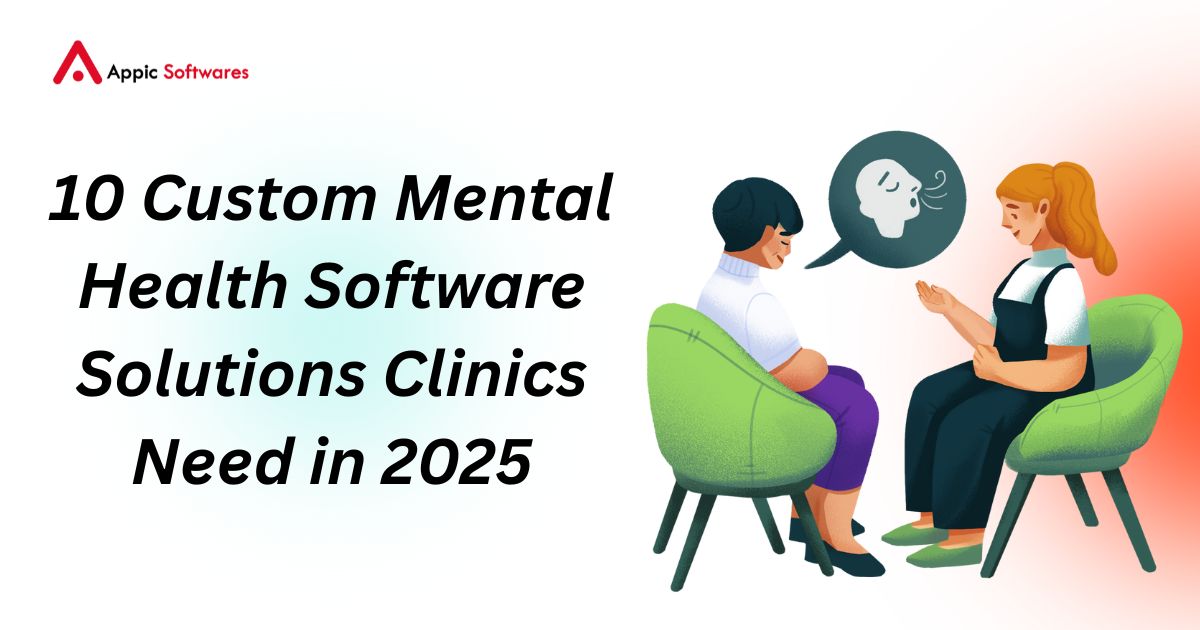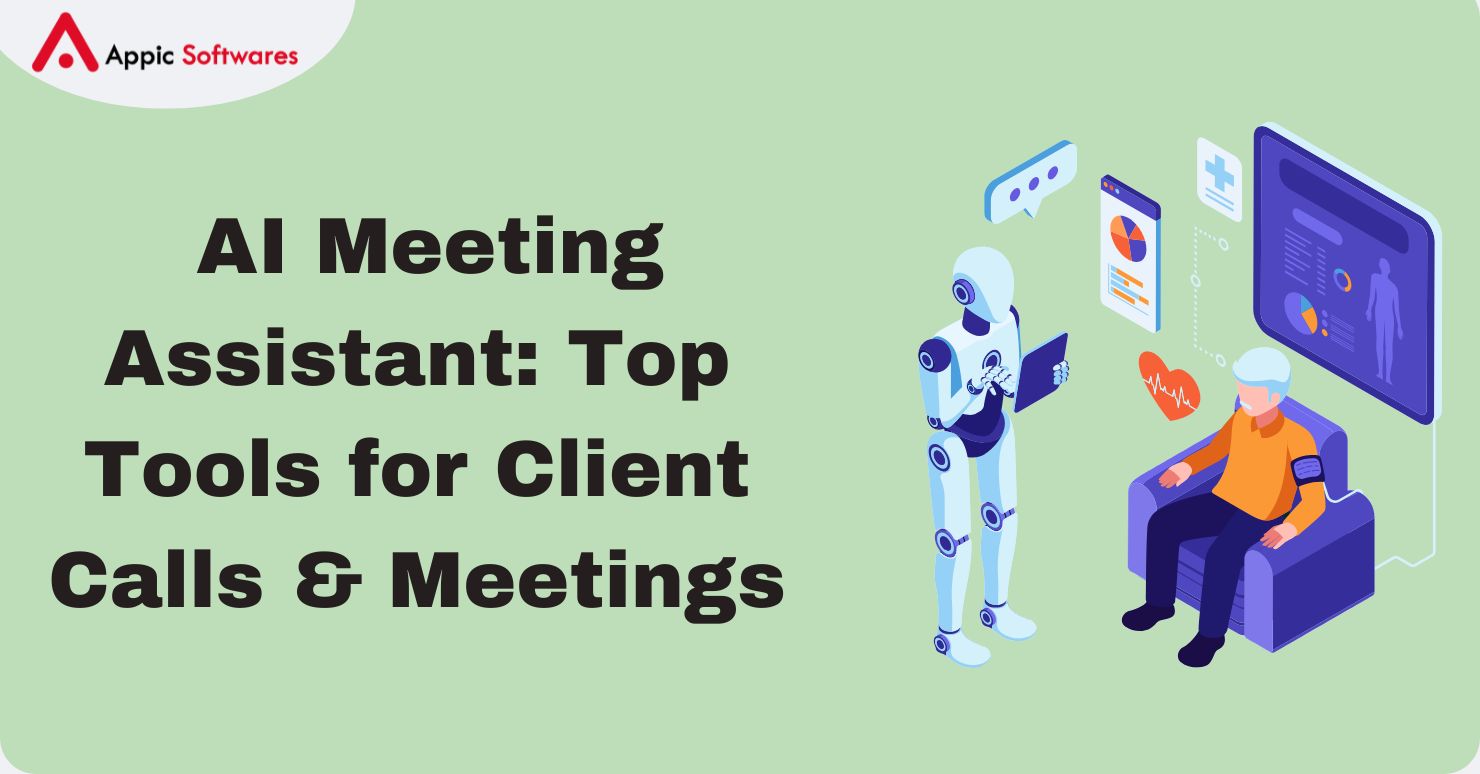
Do you know, that almost 83% of companies are planning to consider using AI in the future? Additionally, the number of businesses that will be using AI in the coming future is predicted to grow by 300%.
The world of artificial intelligence (AI) is growing fast, and one exciting part of it is multi-agents. If you’re wondering about the cost of developing multi-agents, you’ve come to the right place! In this article, we’ll discuss everything you need to know about the cost of developing multi-agents. We’ll cover what multi-agents are, how they differ from single agents, examples of AI agents, a cost comparison, and the best frameworks to build them. By the end, you’ll have a clear idea of the cost of developing multi-agents and what goes into making them. Let’s get started!
What Are Multi-Agents?
Multi-agents are like a team of smart computer programs working together to solve problems. Imagine a group of friends helping each other finish a big puzzle. Each friend has a specific job, like finding corner pieces or matching colors. In the same way, multi-agents are individual AI programs that team up. They talk to each other, share information, and make decisions as a group.
For example, think of a delivery company. One agent might plan the best routes, another checks traffic, and a third tracks packages. Together, they make the whole system run smoothly. This is how a multi-agent system works. These agents are great for big tasks that need cooperation, like managing a warehouse or running a smart city. In many cases, companies reach out to AI Agent development company for help in setting up a simple system that meets their needs.
Building multi-agents takes more work than creating just one AI program. The cost to develop multi-agents depends on how many agents you need, how smart they have to be, and how well they need to work together. We’ll talk more about costs later, but for now, know that multi-agents are all about teamwork.
What Are Single Agents?
Now, let’s look at single agents. A single agent is like a lone superhero. It works by itself to finish a task without needing help from others. Picture a robot vacuum cleaner. It moves around your house, avoids walls, and sucks up dirt all on its own. That’s a single agent.
Single agents are simpler than multi-agents because they don’t have to talk to anyone else. They just follow their own rules and get the job done. You might see single agents in things like a chatbot that answers your questions or a thermostat that controls your home’s temperature.
The big difference is that single agents don’t team up. This makes them easier and cheaper to build than multi-agents. However, they can’t handle super complicated jobs that need lots of coordination. When figuring out the cost to develop multi-agents, you’ll see it’s higher because of the extra teamwork involved. But first, let’s check out some cool examples of AI agents.
Top 5 Examples Of AI Agents

AI agents are everywhere, and they come in all shapes and sizes. Here are five awesome examples of AI agents to give you a better idea of what they can do:
1. Siri or Alexa
These are single agents that live in your phone or smart speaker. They listen to what you say, figure out what you want, and help you, like setting a timer or playing music. They’re simple but super useful.
2. Self-Driving Cars
A car that drives itself uses multiple agents. One agent watches the road, another controls the speed, and a third plans the route. Together, they get you where you need to go safely.
3. Warehouse Robots
In big online stores, robots move boxes around. Each robot is an agent, and they work as a team to pick, pack, and ship your orders fast.
4. Smart Traffic Lights
Some cities use AI to control traffic lights. Each light is an agent that talks to others nearby. They figure out how to keep cars moving and stop traffic jams before they start.
5. Video Game Characters
In games, enemies or teammates often act smart. For example, in a war game, one agent might attack while another defends. These autonomous agents in AI make the game feel real. These characters are a type of Autonomous Agents In AI that work together to create engaging gameplay.
These examples show how AI agents can be single or multi, simple or complex. The cost to develop multi-agents goes up when you need several agents to work together, like in self-driving cars or traffic systems. Next, let’s compare the costs!
Cost Comparison Of Developing AI Agents
So, how much does it cost to develop multi-agents compared to single agents? Let’s break it down step by step.
-
Single Agent Costs
Building a single agent is like making one toy. You need:
- Programmers: A small team (1-3 people) to write the code.
- Time: About 1-3 months for something basic, like a chatbot.
- Tools: Simple software and a computer.
- Cost: Around $5,000 to $20,000, depending on how smart it needs to be.
For example, a company offering AI agent development services might charge $10,000 to build a single agent that schedules appointments. It’s straightforward because it’s just one program doing one job.
-
Multi-Agent Costs
Multi-agents are trickier, like building a whole toy set that fits together. Here’s what you need:
- Bigger Team: 3-10 programmers to handle all the agents and their teamwork.
- More Time: 6 months to a year since they need to test how the agents talk to each other.
- Better Tools: Special software to make sure the agents don’t mess up when they cooperate.
- Cost: Between $50,000 and $200,000 or more.
The AI agent development cost for multi-agents jumps because of the extra work. For instance, a multi-agent system for a delivery company might cost $100,000. Why? You’re paying for several agents (route planner, traffic checker, etc.) and the system to connect them.
What Affects the Cost?
The cost to develop multi-agents changes based on:
| Factor | Description |
| Complexity of AI Agent | Simple rule-based agents cost less, while advanced AI with deep learning and NLP increases costs. |
| Development Time | Longer development cycles increase costs due to extended labor and resource utilization. |
| Technology Stack | Using pre-built AI models (e.g., OpenAI’s GPT) can be cost-effective, while custom-built solutions require more investment. |
| AI Model Training | Costs depend on data availability, preprocessing, and computational resources needed for training. |
| Third-Party API Integrations | Incorporating external AI APIs (e.g., OpenAI, Google AI, AWS) may have recurring costs. |
| Computational Power | High-performance GPUs and cloud resources increase costs, especially for real-time AI processing. |
| Data Collection & Annotation | Quality labeled data is essential for training and can add significant costs if not readily available. |
| Maintenance & Updates | Continuous improvement, bug fixes, and algorithm retraining add long-term costs. |
| Security & Compliance | Implementing data privacy measures (GDPR, HIPAA) increases development and operational costs. |
| Deployment Method | Cloud-based solutions (AWS, Azure) may have ongoing costs, while on-premise solutions require infrastructure investment. |
| User Interface (UI/UX) | A well-designed, interactive AI agent may require additional frontend and UX development costs. |
| Integration with Existing Systems | Custom integrations with CRMs, ERPs, or other enterprise systems add complexity and costs. |
| Customization & Personalization | Tailoring AI behavior for specific industries or user needs increases development effort and cost. |
| Scalability Requirements | Scaling AI agents for high traffic or enterprise use cases requires additional resources and costs. |
So, single agents are cheap and quick, while multi-agents take more time and cash. If you’re on a budget, start with a single agent. But if you need teamwork, multi-agents are worth the higher cost to develop multi-agents.
Best Frameworks To Develop AI Agents
Now that you know the cost of developing multi-agents, let’s talk about the tools to build them. AI Development Frameworks are like instruction manuals that make coding easier. Here are the best ones for AI agents:
1. JADE (Java Agent Development Framework)
JADE is a top choice for building multi-agents and is entirely free! It runs on Java, a popular coding language, and makes it easy for agents to talk to each other. Imagine you’re creating a system where one agent finds data and another makes decisions, JADE helps them share info smoothly. It’s perfect for projects like smart customer service teams or delivery systems.
Since it’s open-source, you don’t pay for the software itself, which cuts the cost to develop multi-agents. However, you’ll still need coders who know Java, and their time adds to the price, usually $50 to $100 per hour. JADE is a solid pick if you want a reliable, low-cost start.
2. MESA
MESA is a framework built for Python, a language loved for being simple and powerful. It’s awesome for multi-agents because it lets you test how they work together, like simulating a group of robots organizing a warehouse. You can see how each agent behaves and tweak things without spending tons of cash upfront. MESA is free too, so it keeps the cost to develop multi-agents down by saving on software fees. It’s great for small businesses or beginners who want to experiment before going big. The downside? It’s not as fast as some other tools for huge projects, but for most needs, it’s a budget-friendly gem.
3. NetLogo
NetLogo feels like a playground for building agents. It’s free, simple, and shows you visually how your agents interact like watching ants in a colony. This makes it perfect for learning or small projects where agents need to team up, such as modelling traffic or a mini economy. Since it’s easy to use, you might not need super pricey experts, which helps lower the cost to develop multi-agents. For example, a freelance coder charging $30 an hour could handle it, compared to $100+ for fancier tools. NetLogo isn’t the best for giant systems, but for quick, affordable multi-agent setups, it’s hard to beat.
4. TensorFlow Agents
TensorFlow Agents comes from Google, and it’s a heavy hitter. This framework is built for agents that need to learn from data like a self-driving car figuring out roads. It’s not just for multi-agents; it works for single ones too. But here’s the catch: it’s more complex. You’ll need skilled coders who charge $80 to $150 per hour, and that bumps up the cost to develop multi-agents. There’s no fee for the framework itself, but the time and brainpower it takes mean bigger projects could cost $100,000 or more. If your agents need to be super smart and adaptable, TensorFlow is worth it just plan for the extra expense.
5. SPADE
SPADE stands for “Smart Python Agent Development Environment,” and it’s all about communication. It’s free and built for multi-agents that need to chat like a team handling customer support calls. One agent might greet users, another grabs account info, and a third solves problems. SPADE makes sure they stay in sync without crashing. This teamwork focus keeps development smooth, cutting hours spent fixing bugs. That efficiency can lower the cost to develop multi agents compared to starting from scratch, maybe saving you thousands. It’s best for Python fans and works well for medium-sized projects where agents need to talk a lot. Some developers also explore agentic ai frameworks for further enhanced communication.
Why Do Frameworks Matter In AI Agent Development?
Using a framework isn’t just about speed it’s about money too. Coding multiple agents without one could take months and rack up huge bills think $200,000 or more for a big system. Frameworks slash that time, sometimes by half, because they handle the boring stuff like agent communication or data sharing. The cost to develop multi-agents still depends on your team and goals, but a good framework keeps it from spiraling out of control. Plus, many are free, so you’re only paying for the people, not the tools.
How To Choose The Right AI Agent Framework?
So, which framework fits your project? If you’re on a tight budget, JADE or MESA are safe bets. Need something visual and cheap? Go with NetLogo. For brainy agents that learn, TensorFlow is your guy, and for chatty teams, SPADE shines. Each one helps control the cost of developing multi-agents by making the process faster and simpler. Test a few out, see what clicks, and you’ll be on your way to building an AI team that works like a dream!
Final Words
Figuring out the cost to develop multi-agents isn’t hard once you break it down. Multi-agents are teams of AI programs that work together, unlike single agents that fly solo. They’re behind cool things like self-driving cars and smart warehouses, but they cost more, anywhere from $10,000 to $200,000—compared to $5,000-$20,000 for single agents. The price depends on how many agents you need, how tricky the job is, and what tools you use.
Frameworks like JADE, Mesa, and TensorFlow make building agents easier and can help control costs. Whether you go for multi or single agents, it’s all about matching your budget to your goals. Now, you’ve got the basics to start planning your own AI project. It’s pretty exciting, right?
Contact us today at Appic Softwares for expert mobile and web solutions. Our dedicated team delivers custom, cost-effective results that meet your project needs promptly.
FAQs
Q.) What is the estimated cost of developing a multi-agent system?
The cost of developing a multi-agent system (MAS) depends on factors such as system complexity, scalability, AI sophistication, and infrastructure requirements.
- A basic MAS with limited agents and pre-trained AI models can range between $10,000 – $50,000.
- A moderate MAS, which includes custom-trained models, cloud-based deployment, and enhanced agent coordination, may cost $50,000 – $150,000.
- An advanced, large-scale MAS with real-time processing, self-learning agents, high-volume data handling, and distributed architecture can exceed $200,000 or more.
Additional expenses, such as ongoing maintenance, AI model updates, and cloud storage, can further impact the overall investment.
Q.) What are the main cost factors in developing a multi-agent system?
Several elements contribute to the cost of developing a MAS, including:
- System Complexity – More complex agent interactions, decision-making algorithms, and automation increase development efforts.
- Number of Agents – More agents require greater computational power, data exchange, and coordination mechanisms.
- AI Model Training – Custom AI models demand specialized training, which may involve significant computing resources.
- Infrastructure & Cloud Services – Hosting MAS on AWS, Google Cloud, or Azure adds recurring costs.
- Data Management – Costs for collecting, storing, and processing data, including database licensing and cloud storage fees.
- Security Measures – Implementing encryption, compliance with regulations (GDPR, HIPAA), and cybersecurity measures.
- Integration & API Development – Connecting MAS with external systems, databases, or IoT devices increases complexity.
- Ongoing Maintenance & Support – Regular updates, bug fixes, and AI model retraining incur long-term expenses.
Q.) How does the number of agents affect development costs?
The number of agents in a MAS directly influences:
- Processing Power – More agents require enhanced computational capabilities, increasing server and cloud costs.
- Communication & Coordination – A higher number of agents leads to complex coordination algorithms, which require additional development time.
- Scalability Requirements – Large-scale MAS may need distributed computing frameworks, further increasing costs.
- Training & Optimization – More agents demand additional AI model training, leading to higher expenses.
For cost efficiency, optimizing agent interactions and using pre-trained AI models can help control expenses.
Q.) How much does data collection and annotation cost for MAS?
Data collection and annotation are critical for training AI-powered MAS. Costs vary based on:
- Public vs. Custom Datasets – Free public datasets reduce costs, but proprietary, domain-specific data requires custom collection.
- Manual vs. Automated Annotation – Human-labeled data is expensive, costing $0.05 to $5 per data point, while automated labeling can reduce costs.
- Data Volume – Large-scale, high-quality datasets with millions of samples can cost thousands to millions of dollars.
- Real-Time vs. Static Data – Continuous data collection for real-time MAS increases cloud storage and processing expenses.
Leveraging synthetic data generation and transfer learning can help reduce data-related costs.
Q.) Do real-time multi-agent systems require higher AI training costs?
Yes, real-time multi-agent systems demand:
- Advanced AI Models – Real-time decision-making requires sophisticated reinforcement learning (RL) and deep learning models, increasing training costs.
- High-Performance Computing (HPC) – Training real-time MAS may need GPUs, TPUs, or cloud-based AI accelerators, adding expenses.
- Continuous Learning – Real-time MAS often use adaptive learning techniques, which require ongoing training and dataset updates.
- Latency Optimization – Ensuring low-latency responses demands additional development efforts and premium cloud services.
Due to these factors, real-time MAS training can be 2-5x more expensive than static or batch-trained systems.








